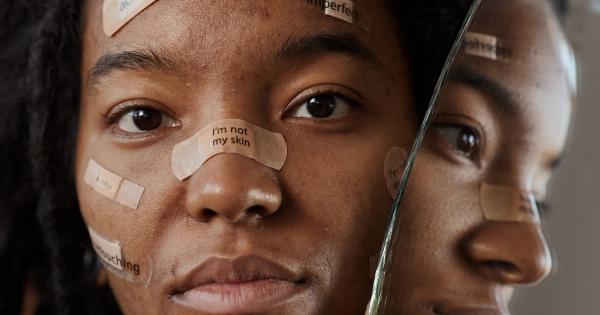Pimples are a common skin condition that affects people of all ages. They can appear anywhere on the body but are most commonly found on the face, chest, shoulders, and back.
Many factors can contribute to the development of pimples, including hormonal changes, genetics, and skin care practices. In this article, we will explore when pimples typically show up and go away, as well as some tips for prevention and treatment.
When do pimples start to appear?
Pimples typically start to appear during puberty, which is when the body goes through significant hormonal changes. These hormonal fluctuations can cause the sebaceous glands to produce more oil, leading to clogged pores and the formation of pimples.
For most people, pimples first show up during their teenage years, but they can also appear in adulthood.
Puberty and pimples
During puberty, the body releases higher levels of androgens, a type of hormone that stimulates the sebaceous glands. This increased sebum production, combined with dead skin cells and bacteria, can clog pores and lead to the formation of pimples.
The severity of acne during puberty can vary, with some individuals experiencing mild breakouts and others dealing with more severe forms of acne such as cysts or nodules.
Hormonal changes and adult acne
While pimples are commonly associated with adolescence, they can occur in adulthood as well. Hormonal changes, particularly in women, can trigger breakouts.
Hormonal fluctuations that happen during the menstrual cycle, pregnancy, or menopause can contribute to the development of pimples. This type of acne is often referred to as hormonal acne and is commonly observed on the chin, jawline, and around the mouth.
Other factors that contribute to pimples
Aside from hormonal changes, several other factors can contribute to the appearance of pimples. These include:.
- Genetics: If your parents or close relatives had acne, there is a higher likelihood that you will also experience it.
- Diet: While the direct link between diet and pimples is still being studied, some research suggests that consuming high-glycemic foods or dairy products may exacerbate acne.
- Stress: High-stress levels can lead to hormonal imbalances and increased inflammation in the body, both of which can contribute to the development of pimples.
- Environmental factors: Exposure to certain pollutants, humidity, or excessive sweating can irritate the skin and lead to breakouts.
- Use of certain products: Some skincare or hair care products contain ingredients that can clog pores or irritate the skin, leading to acne.
How long do pimples last?
The duration of a pimple varies depending on the type and severity of acne. Generally, pimples can last anywhere from a few days to a few weeks.
Mild pimples, such as blackheads or whiteheads, tend to resolve more quickly, while inflamed pimples, papules, pustules, or cysts may take longer to heal.
Effective treatments for pimples
While pimples may resolve on their own, there are several treatment options available to help speed up the healing process and prevent future breakouts. These include:.
- Over-the-counter products: Topical creams, gels, or cleansers containing ingredients like benzoyl peroxide, salicylic acid, or sulfur can be effective in reducing acne.
- Prescription medications: In severe cases, a dermatologist may prescribe oral medications like antibiotics, hormonal therapy, or isotretinoin to treat acne.
- Professional procedures: Dermatologists may also perform procedures such as chemical peels, microdermabrasion, or laser therapy to treat acne.
- Proper skincare: Maintaining a regular skincare routine involving gentle cleansing, moisturizing, and exfoliating can help prevent clogged pores and reduce the frequency of breakouts.
- Lifestyle changes: Adopting a healthy lifestyle that includes a balanced diet, regular exercise, stress management, and adequate sleep can contribute to overall skin health.
Preventing pimples
While it may not always be possible to prevent pimples entirely, following these tips can help minimize their occurrence:.
- Keep your face clean: Wash your face twice daily using a mild cleanser to remove excess oil, dirt, and sweat.
- Avoid touching your face: Touching your face can transfer bacteria and oil to the skin, potentially leading to breakouts.
- Don’t squeeze or pop pimples: Popping pimples can cause further inflammation and may result in scarring.
- Choose non-comedogenic products: Look for skincare and cosmetic products labeled as non-comedogenic, meaning they do not clog pores.
- Protect your skin from the sun: Excessive sun exposure can worsen acne, so always use a broad-spectrum sunscreen and wear protective clothing.
Conclusion
Pimples are a common skin concern that can affect people at various stages of life. While they typically first appear during puberty due to hormonal changes, they can also emerge in adulthood due to hormonal fluctuations or other factors.
Understanding when pimples show up and go away can help individuals manage their skin better. By adopting proper skincare practices, seeking appropriate treatments, and making necessary lifestyle modifications, it is possible to minimize the occurrence of pimples and promote healthier skin.





























